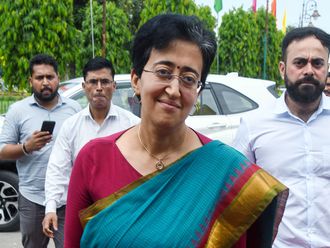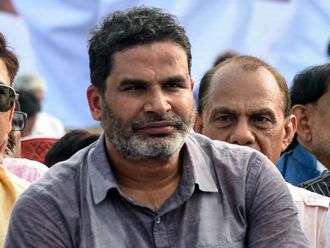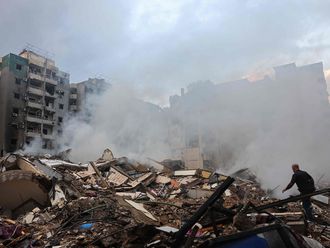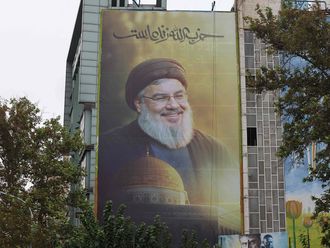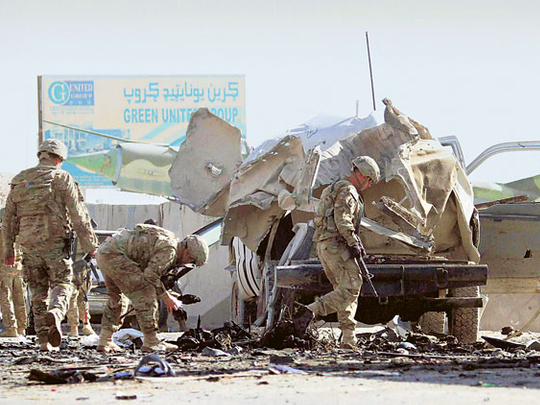
How should we measure success in Afghanistan? It's a crucial question, but there isn't much agreement on an answer. In mid-January, the Los Angeles Times ran a story on the latest National Intelligence Estimate on Afghanistan, a classified assessment drafted by analysts at more than a dozen US intelligence agencies.
According to the Times, the report "warns that security gains from an increase in troops have been undercut by pervasive corruption, incompetent governance and Taliban fighters operating from neighbouring Pakistan". Those with direct responsibility for the war — top military commanders and the US ambassador to Kabul — reportedly contested the report's findings in a written dissent.
The dispute highlights an ongoing struggle to shape US perceptions on Afghanistan. Analysts like using numbers to bolster their arguments because numbers seem hard and fast. But they don't always agree. Last summer, for example, the Nato command in Kabul announced that for the first time since 2006, insurgent attacks were down compared with the previous year. But United Nations agencies and humanitarian organisations were reporting large upticks in violence and its effect on civilians.
Humanitarian groups, by contrast, were tabulating all violence suffered by civilians, no matter who the perpetrator, including kidnappings and shootings at the hands of the militias that the US military has armed to fight the Taliban.
Afghans themselves are attuned to something less tangible: the likelihood of danger. Take last September's attack by a few militants shooting rocket-launched grenades from a tower in central Kabul, which shut down the US Embassy and nearby Nato headquarters for 20 hours. Foreign officials might record such an incident as a single attack. But to Kabul residents, it sent an overpowering message that their city was unsafe, that the militants could do what they wanted.
Driving out Taliban
Underlying the current dispute over the intelligence estimate is another, deeper divide. The assessment reportedly acknowledges the hard work by Afghan and foreign troops in driving the Taliban out of many of its strongholds. That success is clearly visible in Kandahar, where I have lived for most of the last decade. But its significance is less clear. "Yes, we've made gains against the Taliban around Kandahar," a minister and former Kandahar governor told me recently. "But it takes 18,000 men for a single district. We can't sustain that."
And there have been other costs. As troops moved into rural districts the Taliban had held, they built dirt roads right through farmers' vineyards and orchards. I saw the results when I went to visit a friend's family land. Debris had been shoved into an irrigation channel that once watered the whole village, razor wire had been looped across a road, and buildings where families dry their grapes to make prized raisins had been destroyed. There were good tactical reasons for inflicting such damage.
Many of the buildings had been booby-trapped by the retreating Taliban, or they obstructed the troops' lines of sight. But the local economy, already one of the most threadbare on Earth, has been badly hurt.
Compensation money was paid out, but still, success against the Taliban came at great cost to residents. They are left with the question: What now? If their grapevines or fruit trees dry out, what should they plant? If insurgents offer poppy seeds, should they accept? And what about the Afghan soldiers who stole the furniture out of the blown-up buildings? Villagers can't take them to court because the judicial system is deeply corrupt. So who can give them recourse? A sense of justice? Maybe the Taliban. If, on the other hand, the Taliban does move back in, or if it is given power in some deal negotiated by the US and an Afghan government most of its citizens don't view as legitimate, how will the many Afghans who don't wish to be subjected to Taliban rule react? The Afghan security forces the US has been working so hard to build up are largely commanded by viscerally anti-Taliban groups. Is US policy driving Afghanistan back toward civil war?
If the US government chooses not to address the two fundamental political and diplomatic challenges its intelligence estimate is said to highlight — corrupt government and Pakistan's support for extremist violence — then why waste more blood and treasure? But President Barack Obama must make that decision in full cognisance of the dangers, so he can plan for them and try to mitigate some of them. He needs more divergent views, not fewer.
Though I doubt the nation's intelligence community can be easily cowed, even by three generals and an ambassador, the impulse to interfere is wrong. Writing problems out of documents won't make them go away. Obama deserves a clear exposition of competing assessments of national security issues. Then it's for him to hash out the differences in internal debate.
— Los Angeles Times
Sarah Chayes lived and worked in Afghanistan from 2001 to 2010. She advised the Nato command in Kabul and the US Joint Staff, and she wrote The Punishment of Virtue: Inside Afghanistan After the Taliban.



